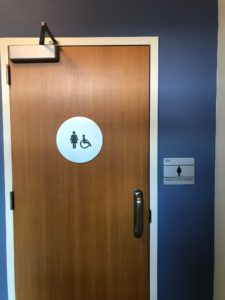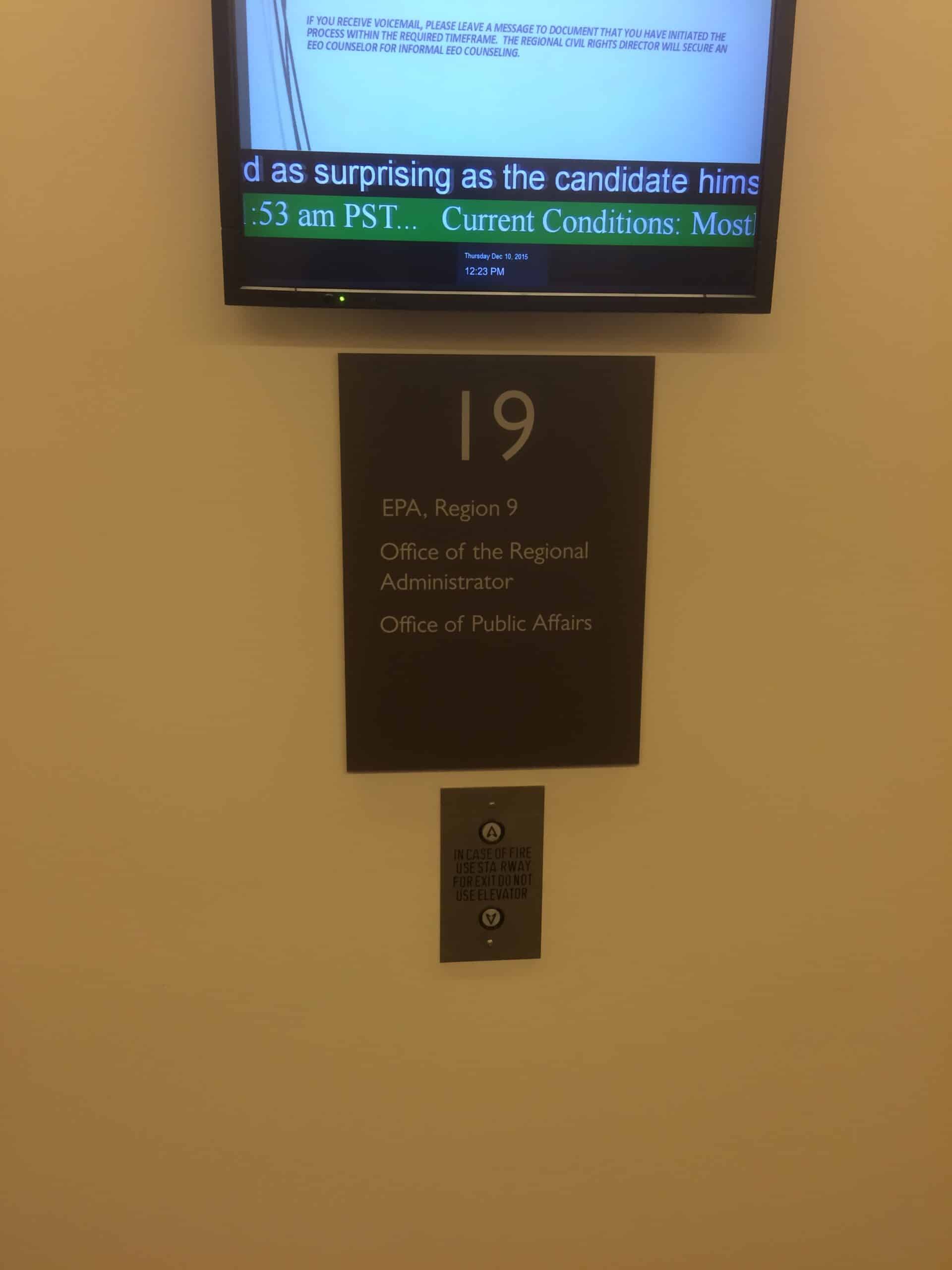 Braille signage plays a crucial role in ensuring accessibility for visually impaired individuals. Businesses and public spaces must comply with the Americans with Disabilities Act (ADA) by installing Braille signs that help people navigate safely and efficiently. But not all Braille signs are the same! Different fabrication methods offer unique benefits in terms of durability, design, and cost.
Braille signage plays a crucial role in ensuring accessibility for visually impaired individuals. Businesses and public spaces must comply with the Americans with Disabilities Act (ADA) by installing Braille signs that help people navigate safely and efficiently. But not all Braille signs are the same! Different fabrication methods offer unique benefits in terms of durability, design, and cost.
SignWorks has extensive experience in producing high-quality Braille signage for a variety of projects across the Bay Area. Let’s take a closer look at the different types of Braille signs and how they are made.
Types of Braille Signage
Braille signs can be created using several different manufacturing techniques. Each method offers distinct advantages depending on the project’s needs.
Photopolymer with Beads
- One of the most popular methods for creating Braille signage.
- The design is etched into a photopolymer sheet and raised Braille beads are added for tactile readability.
- Highly durable and resistant to wear and tear.
- Commonly used for interior office buildings, schools, and public spaces.
- SignWorks Project: California Conservation Corps required long-lasting, easy-to-read Braille signs for their facilities, and SignWorks delivered using this method.
Integral Braille (Embedded Braille)
- The Braille is built directly into the sign during the manufacturing process rather than being added separately.
- Provides a seamless look with a high level of durability.
- Ideal for high-traffic areas where the signs may experience frequent touch or cleaning.
- SignWorks Project: At 75 Hawthorne in San Francisco, SignWorks installed integral Braille signage, offering a sleek, long-lasting solution for the commercial space.
Injection Molded Braille
- Uses a plastic molding process to create raised Braille and tactile lettering in one step.
- Offers precise and consistent Braille dot height and placement.
- Cost-effective for large-scale projects that require uniform signs.
- Common Applications: Hospitals, corporate offices, and government buildings.
Raster Bead Braille
- Tiny acrylic beads are inserted into pre-drilled holes on the sign’s surface.
- Allows for clear, raised Braille that is easy to read by touch.
- Popular for ADA-compliant room identification and restroom signs.
- SignWorks Project: SignWorks has used this method for several hotels and apartment buildings that need cost-effective, high-quality Braille signage.
Appliqué Braille
- Uses a layered process where raised letters and Braille dots are applied onto background material.
- Works well with a variety of sign materials like metal, acrylic, and wood.
- Suitable for decorative or branded ADA signs that need a custom look.
Lighting and Material Options for Braille Signage
While Braille signs are often thought of as simple tactile signs, they can also be customized with different materials and lighting options.
Material Choices
- Acrylic: Lightweight, durable, and available in many colors.
- Metal: Offers a sleek, modern look for upscale businesses.
- Wood: Creates a natural, rustic aesthetic, ideal for boutique hotels or environmental organizations.
- Photopolymer: Resistant to vandalism and harsh conditions.
Illuminated Braille Signs
While not common, some Braille signs can incorporate backlighting or edge lighting for visibility in dark areas.
- LED backlit Braille signs can be used in theaters, restaurants, or hotels.
- Glowing photoluminescent Braille signs are ideal for emergency exit paths.
Recent SignWorks Braille Signage Projects
SignWorks has completed numerous Braille signage projects for businesses, government facilities, and commercial spaces. Here are a few recent examples:
California Conservation Corps
- Created durable photopolymer Braille signs for their training centers.
- Designed with high-contrast colors to improve readability for visually impaired individuals.
75 Hawthorne, San Francisco
- Installed integral Braille signage, ensuring long-lasting accessibility compliance.
- Used high-quality materials to blend seamlessly with the modern interior design.
Boutique Hotel in Palo Alto
- Designed elegant, customized Braille room number signs using appliqué lettering.
- Matched the hotel’s branding while meeting ADA requirements.
Why Choose SignWorks for Braille Signage?
SignWorks has a strong reputation for producing high-quality Braille signage that meets ADA requirements while also aligning with the aesthetic needs of businesses. Here’s why clients trust us:
- Expertise: Years of experience creating Braille signage for various industries.
- Custom Design: Tailored solutions that match branding and decor.
- Precision Fabrication: High-quality materials and exacting standards for tactile readability.
- Compliance Assurance: We ensure that every sign meets ADA guidelines.
- Fast Turnaround: Efficient production and installation to meet project deadlines.
Final Thoughts
Braille signage is essential for accessibility, and the right fabrication method can make all the difference in durability, readability, and design. Whether using photopolymer with beads, integral Braille, or injection molding, SignWorks has the expertise to create high-quality Braille signs for any setting.
If you need ADA-compliant Braille signage for your business or facility, reach out to SignWorks today. Our team is ready to help with expert guidance and top-tier craftsmanship!

